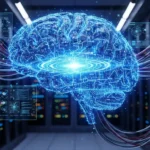Integrating artificial intelligence (AI) into various industries has sparked concerns about job displacement, as automation and AI-driven technologies can replace human labor in certain tasks and roles. While AI offers numerous benefits, such as increased efficiency, productivity, and innovation, its widespread adoption has raised questions about the future of work and the potential consequences for the labor market. Understanding the effect of AI on job displacement is essential for policymakers, businesses, and individuals to navigate the transition and ensure a fair and inclusive future of work.
Assessing the Scope of Displacement
AI and job displacement have the potential to automate routine and repetitive tasks across various industries, including manufacturing, transportation, retail, and customer service. As AI technologies continue to advance, jobs that involve manual labor, data entry, and basic cognitive tasks are at risk of displacement. Moreover, AI-driven technologies, such as robotics, machine learning, and natural language processing, are increasingly capable of performing complex tasks traditionally carried out by humans, further contributing to job displacement in certain sectors.
Addressing Skills Mismatch
While AI and job displacement may lead to job displacement in certain roles, they also create opportunities for new jobs and skill sets in demand in the digital economy. However, there is a growing concern about a skills mismatch, as the jobs created by AI often require specialized technical skills and digital literacy that many workers may lack. Addressing this skills gap through education, training, and reskilling programs is essential to help workers adapt to the changing labor market and transition into new roles less susceptible to automation.
Promoting Inclusive Growth
To mitigate the impact of AI and job displacement and ensure inclusive growth, policymakers, businesses, and civil society must collaborate to develop comprehensive strategies prioritizing workers’ rights, well-being, and economic security. It includes investing in lifelong learning initiatives, upskilling and reskilling programs, and job transition support services to help workers adapt to the changing demands of the labor market. Additionally, policies that promote job creation, income support, and social safety nets can mitigate the negative consequences of job displacement and ensure that the benefits of AI are shared equitably across society.
Conclusion
AI and job displacement have the potential to disrupt the labor market and lead to job displacement in specific sectors, raising concerns about the future of work and economic inequality. While AI and Job Displacement offer numerous benefits, including growing efficiency and productivity, their widespread adoption requires careful consideration of their impact on workers and society. By investing in education, training, and support programs, policymakers and businesses can help workers adapt to the changing labor market and ensure that the benefits of AI are distributed equitably, fostering inclusive growth and prosperity for all.





